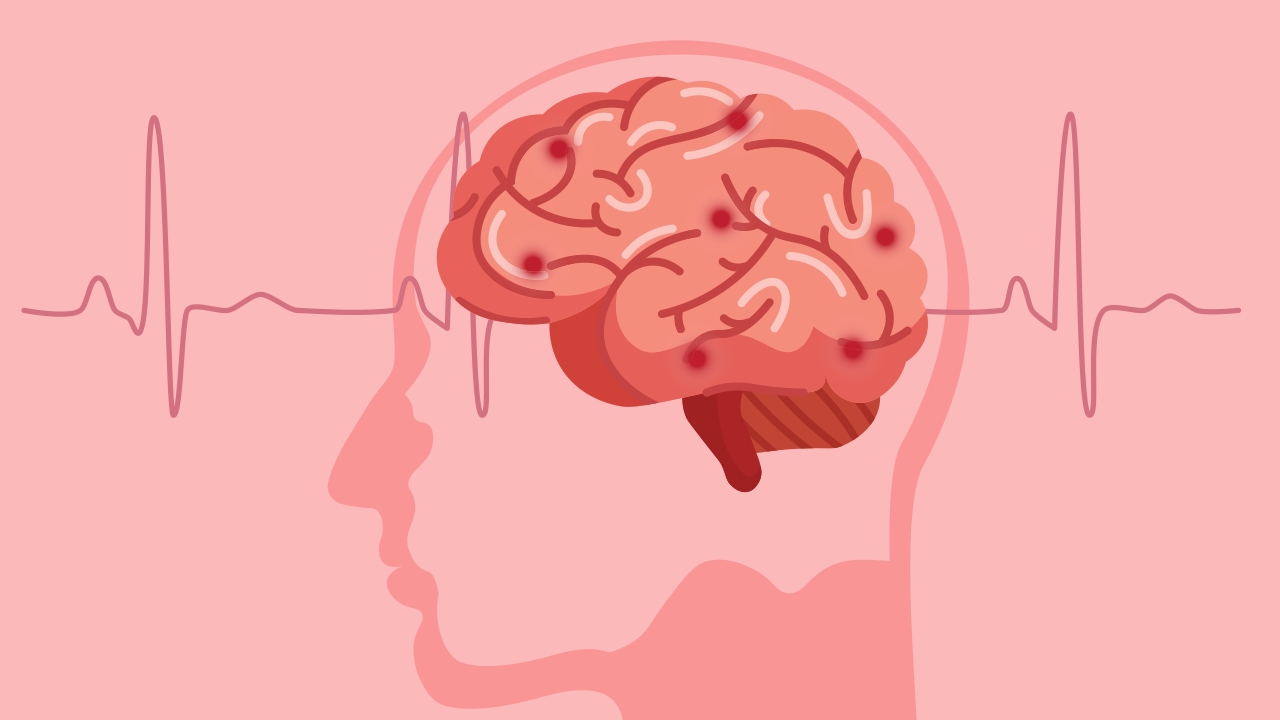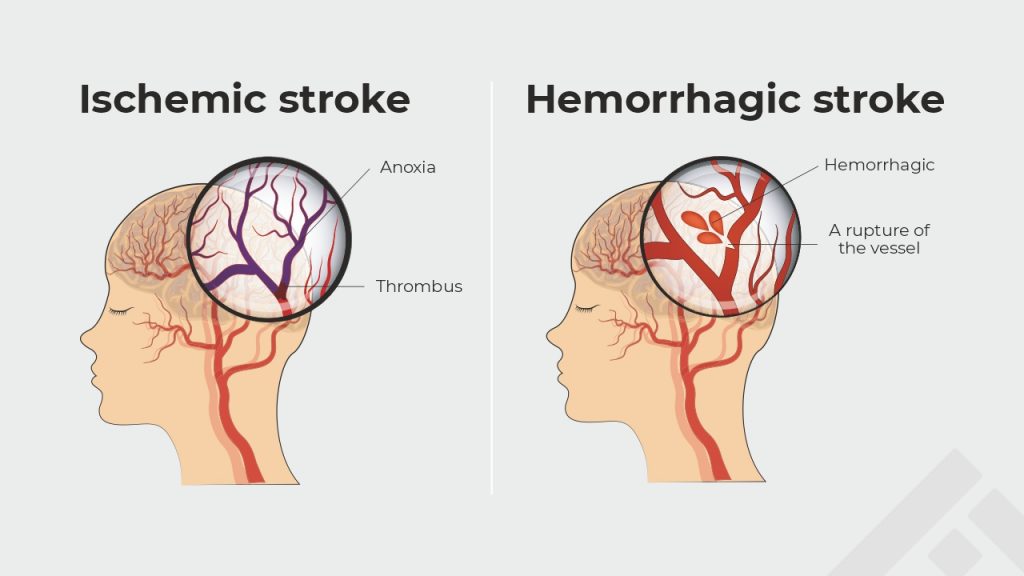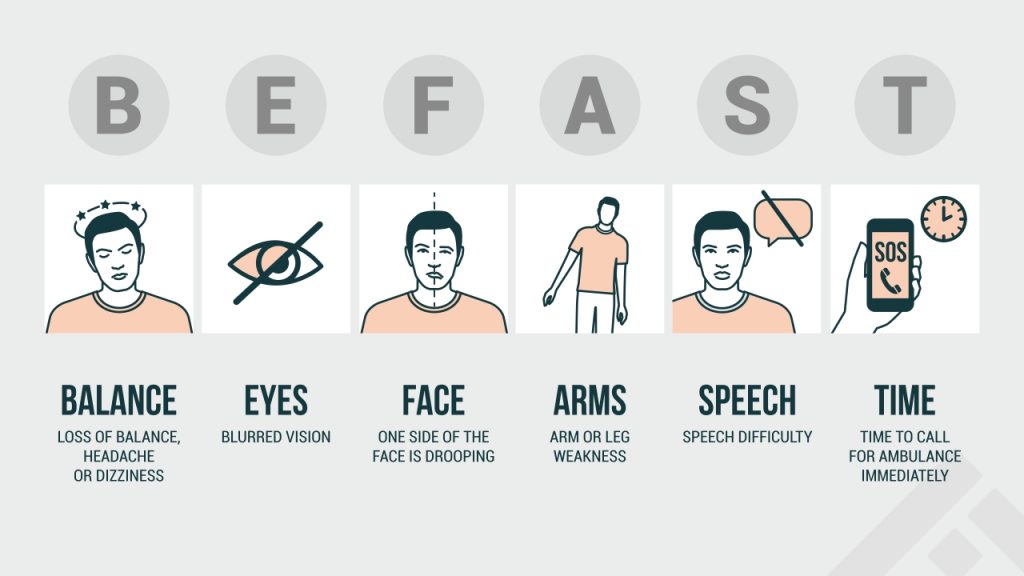
Stroke: When You Need to Act F.A.S.T

Every year, stroke affects 15 million people worldwide. It is also a leading cause of death and disability. But what is a stroke?
The brain takes up just 2% of your body weight. But it controls all your body processes, for which, oxygen is crucial. The brain is one of the highest oxygen-consuming organs in the body and utilizes 20% to 25% of the supply. Nerve cells in the brain or neurons need constant energy, generated through metabolism that requires oxygen and glucose. This enables them to send signals and communicate with each other to ensure smooth functioning of the body.
As neurons cannot store energy, they require a continuous blood flow to supply oxygen to the brain. If oxygen is limited or stopped, brain cells start dying, and this damage intensifies over time. When blood flow to the brain is restricted or the oxygen supply cut off, it leads to a condition known as stroke.
Types of stroke
The brain receives blood through two main arteries — the carotid and the vertebral artery. These branch into smaller vessels and permeate the brain. Any blockage or rupture in these arteries will cut off the oxygen supply to the brain, leading to stroke. Strokes can be broadly divided into ischemic and hemorrhagic stroke. The Transient Ischemic Attack (TIA) constitutes a third type.

Ischemic stroke: Almost 87% of strokes fall in this category. It happens when a blood clot blocks the passage of blood in the arteries to the brain. A blood clot can form elsewhere in the body, travel to the brain, and block the blood vessels as well. In atherosclerosis, a common high blood pressure disease, blood vessels get narrowed due to the formation of plaque (fat collection). This plaque can then break off, move with the blood flow, and block the arteries or smaller vessels carrying blood to the brain.
Hemorrhagic stroke: These are not very common and constitute 13% of all strokes. It is also known as cerebral or intracranial hemorrhage or more commonly, brain hemorrhage. It happens when some artery in the brain ruptures or bursts open leading to the blood leaking out and damaging the surrounding tissue. As the skull is a tough structure, the leaked blood puts tremendous pressure on the brain, causing swelling and brain damage.
Transient ischemic attack: Also known as a mini-stroke, TIAs are caused by a temporary block in the arteries of the brain. Generally, a blood clot formed elsewhere in the body travels to the artery and clogs the blood flow. If the clot is very small, it may pass out of the artery or dissolve on its own after a while. The patient may experience mild symptoms of stroke for some time, before feeling perfectly alright. Though the effects of TIA subside within a few hours, it may cause a full ischemic stroke in the future. It’s advisable to consult a doctor immediately.
Risk factors
Certain health conditions and lifestyle choices put you at a greater risk for a stroke.
- High blood pressure
- Heart disease
- Diabetes
- Smoking
- Consumption of alcohol or any other substance abuse
- Unhealthy diet, consisting saturated fats, high salt, and cholesterol
- Lack of physical activity or being overweight
- Oral contraceptive pills or hormonal therapy
- Family history of stroke or heart problems
- History of TIA
Symptoms
Recognizing early symptoms of stroke and ministering quick medical attention is of paramount importance and can prevent permanent brain damage. An easy-to-remember acronym for reading the signs is BE FAST. It stands for:
B for the loss of balance. Swaying or falling while standing or walking, a reeling sensation while changing a position, or while lying on a particular side, sudden headache or confusion
Eye symptoms in the form of blurring of vision, sudden complete loss of vision, inability to see from any particular corner of the eye
Face drooping. Ask the person to smile, check if it looks uneven, or dropped on one side.
Arms weakness. Ask the person to raise both their arms and check if one arm drifts downwards
Speech difficulty. Ask the person to repeat a sentence and check if their speech is difficult to understand or slurred
Time to call the emergency services immediately

The brain tissue does not detect pain, so technically you will not feel the blockage but the symptoms are almost immediate and noticeable. These will manifest in body parts that are controlled by the damaged part of the brain.
Treatment
Treatment will depend on what type of stroke it is, which is determined through imaging tests such as CT or MRI scans. The timing between the appearance of symptoms and seeking medical help is the most important factor in controlling the damage and better recovery. Ideally, you have a good chance of recovery if you are treated within three hours of the appearance of the symptoms.
For ischemic stroke: As this is caused by a clot blocking the blood flow in the artery, the goal is to remove it. You may recover well if medicine to break the clot is administered within three hours. In some cases, where medication cannot be administered, or if the clot is too large, a surgery called thrombectomy is performed to remove the clots. In this procedure, a catheter — a thin tube — is snaked through the blood vessels in the groin to reach the blocked arteries to remove the clot. Aspirin and other medications may be given to prevent the formation of new clots.
For hemorrhagic stroke: A large part of the treatment for a hemorrhagic stroke is to lower the pressure on the brain and control bleeding. So, any blood-thinning medicine is stopped immediately, and drugs to stop the bleeding and formation of clots are administered. Additionally, medicines to reduce blood pressure, prevent seizures, and brain swelling are also given. If those do not help, surgery may be performed to stop the bleeding.
Post-recovery procedure
Stroke patients generally require a prolonged period of care even after treatment in a hospital. The functions lost at the time of a stroke return slowly. In many cases, they are never fully restored to pre-stroke levels. You may need physical therapy and muscle strengthening exercises with a trained physiotherapist, speech and cognitive therapy, treatment for dysphagia (swallowing problems), and help with problems arising due to impairment of eyesight. Your glucose levels and blood pressure also need to be strictly monitored.
Stroke can also affect your and your family’s psychological well-being. Timely medical attention for depression and anxiety will help you and your family deal with the condition better.
Making lifestyle changes and choosing to eat healthy and exercise regularly go a long way in preventing a stroke. If it does occur, remember that recovery depends on how fast you act.
References
1. Holland K. Everything You Need to Know About Stroke. Healthline. https://www.healthline.com/health/stroke (accessed Mar 1, 2021).
2. What Happens When You Have a Stroke? WebMD. https://www.webmd.com/stroke/happens-body-stroke#2 (accessed Mar 1, 2021).
3. Michaud M. Study Reveals Brain’s Finely Tuned System of Energy Supply. University of Rochester Medical Center. 2016; published online Aug 7. https://www.urmc.rochester.edu/news/story/study-reveals-brains-finely-tuned-system-of-energy-supply#:~:text=In fact%2C the brain%27s oxygen,brain activity and blood flow (accessed Mar 1, 2021).
4. Swaminathan N. Why Does the Brain Need So Much Power? Scientific American. 2008; published online Apr 29. https://www.scientificamerican.com/article/why-does-the-brain-need-s/ (accessed Mar 1, 2021).
5. Stroke. NHS. https://www.nhs.uk/conditions/stroke/ (accessed Mar 1, 2021).
6. Ischemic Stroke (Clots). American Stroke Association. https://www.stroke.org/en/about-stroke/types-of-stroke/ischemic-clots (accessed Mar 1, 2021).
7. Treatment for Stroke. Stanford Healthcare. https://stanfordhealthcare.org/medical-conditions/brain-and-nerves/treatments.html (accessed Mar 1, 2021).
8. Stroke. MayoClinic. 2021; published online Feb 09. https://www.mayoclinic.org/diseases-conditions/stroke/diagnosis-treatment/drc-20350119#:~:text=An IV injection of recombinant,hours after stroke symptoms started (accessed Mar 1, 2021).
9. Hemorrhagic Stroke. Harvard Health Publishing. 2019. https://www.health.harvard.edu/a_to_z/hemorrhagic-a-to-z (accessed Mar 1, 2021).
10. Top Causes of Stroke. WebMD. https://www.webmd.com/stroke/guide/causes-risks#1 (accessed Mar 1, 2021).
11. Watts ME, Pocock R, Claudianos C. Brain Energy and Oxygen Metabolism: Emerging Role in Normal Function and Disease. Front Mol Neurosci 2018; 11: 216.














